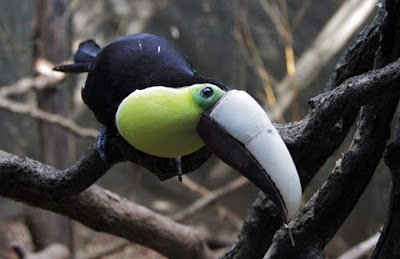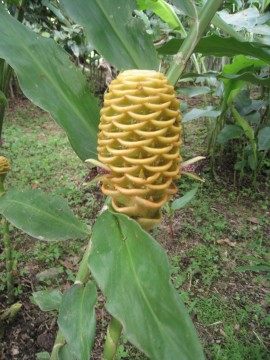See the eruption story and video at:
http://www.ticotimes.net/2016/07/25/costa-ricas-turrialba-volcano-erupts-sends-ash-3-km-high
THE GOOD NEWS: Erupting Volcanoes may help slow global warming. Interesting!
See the eruption story and video at:
http://www.ticotimes.net/2016/07/25/costa-ricas-turrialba-volcano-erupts-sends-ash-3-km-high
THE GOOD NEWS: Erupting Volcanoes may help slow global warming. Interesting!
As you know, some butterflies live only a few days or weeks. And some of those decide to come into my house before they die! I sweep out dead insects every morning! I’ve had more than one of this particular species inside and one I found dead today (1st two photos). I am pretty sure it is in the Heliconia family but can’t place it in one of the known 29 subspecies. It seems to be like a Postman but they are usually red rather than orange with the black and white and different body. It is also similar to the Heliconius Linnaeus and the Heliconius Ismenius, but not exactly! So I’m calling it an Unidentified Heliconius Butterfly or Moth.
 |
| Back or bottom side of this butterfly/moth. Bottom is almost always totally different than the top side. |
 |
| They come in my always open doors, then try to get out a closed window screen. Not too smart. |
 |
| My moving flower arrangements inside. 🙂 |
See My Butterfly Photo Gallery now on SmugMug.
“Charlie Doggett’s COSTA RICA” where eventually I will have all my Costa Rica photos.
 |
| Unknown In My Home Garden, Roca Verde, Atenas, Costa Rica Doesn’t quite match photos of crackers, black witch, duskywing or moths. |
BUTTERFLIES & MOTHS IN COSTA RICA:
There are about 1,251 species of butterflies and at least 8,000 species of moths. Butterflies and moths are common year round but are more present during the rainy season. Ten percent of known butterfly species worldwide reside in Costa Rica.[13]
https://en.wikipedia.org/wiki/Wildlife_of_Costa_Rica
 |
| When in Alajuela Wednesday we walked through the Alajuela Cathedral at Central Park. I am always struct by the ceiling art! There is beauty and love and gospel everywhere! And my faith is strengthened! |
31 Immediately Jesus reached out His hand, caught hold of him, and said to him,“You of little faith, why did you doubt?” Matthew 14:31 HCSB
 |
| “I’m too busy to sit in the rocking chair and watch it rain!” Is what I used to say. But I just did it! And have several times recently. So far it has been a good rainy season. And I’m slowing down! |
 |
| Like Jewels! Rain drips off a cecropia leaf. |
 |
| Tico Times photo of injured Keel-billed Toucan at ZooAVE |
 |
| Maraca Plant zoomed in at 300 mm |
 |
| Maraca Plant zoomed out at 75 mm |
The following description is from:
https://livingfarmacy.wordpress.com/herb-identification/the-gingers/
 In Hawaii the spicy-smelling fresh rhizomes was at one time pounded and used as medicine for indigestion and other ailments. To ease a stomach ache, the ground and strained rhizome material was mixed with water and drunk. External: In traditional medicine, the rhizome was ground in a stone mortar with a stone pestle and mixed with a ripe Noni fruit to treat severe sprains. The pulp was placed in a cloth and loosely bound around the injured area. For a toothache or a cavity, the cooked and softened rhizome was pressed into the hollow and left for as long as was needed. Perhaps the most common use of the plant is as a shampoo and conditioner for the hair. The clear slimy juice present in the mature flower heads is excellent for softening and bringing shininess to the hair. It can be left in the hair or rinsed out. Hawaiian women often pick or cut the flowerheads of this plant in the forest, as they approach a pool or waterfall for a refreshing summer bath, leave the flowers atop a nearby rock, and then squeeze the sweet juices into their hair and over their bodies when the swim is completed .
In Hawaii the spicy-smelling fresh rhizomes was at one time pounded and used as medicine for indigestion and other ailments. To ease a stomach ache, the ground and strained rhizome material was mixed with water and drunk. External: In traditional medicine, the rhizome was ground in a stone mortar with a stone pestle and mixed with a ripe Noni fruit to treat severe sprains. The pulp was placed in a cloth and loosely bound around the injured area. For a toothache or a cavity, the cooked and softened rhizome was pressed into the hollow and left for as long as was needed. Perhaps the most common use of the plant is as a shampoo and conditioner for the hair. The clear slimy juice present in the mature flower heads is excellent for softening and bringing shininess to the hair. It can be left in the hair or rinsed out. Hawaiian women often pick or cut the flowerheads of this plant in the forest, as they approach a pool or waterfall for a refreshing summer bath, leave the flowers atop a nearby rock, and then squeeze the sweet juices into their hair and over their bodies when the swim is completed . |
| NAMU is the Bri Bri indigenous language for Jaguar and name of shop. Not allowed to make photos inside. Lots of masks, baskets, carvings, etc. |
 |
| Afterwards we stop at “Porky’s” for a choice of 50+ hamburgers & 100’s of beers. |
This was my second trip with this group, the other being a Central American Art show I shared about in one blog post. July 31 I’m going with the music lovers of this group of expats to San Jose for a performance of the opera La Boheme. That should be interesting since I have not generally cared for most operas, but think I will like this one. I’m reading the English translation of the script now thanks to Kindle! The men get together for dart tournaments but that has not interested me yet.